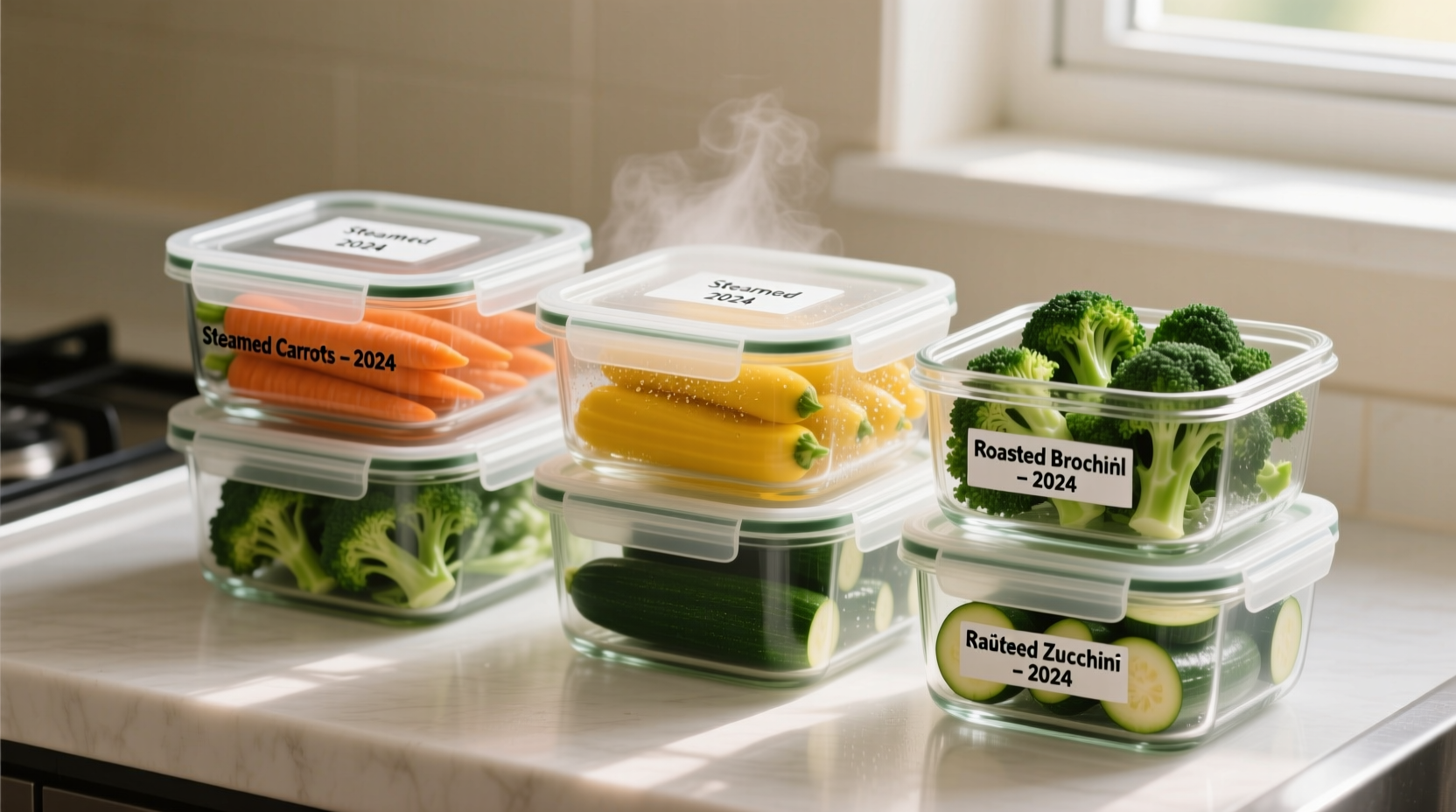Stop guessing about your leftovers! This guide delivers exact timeframes for over 15 common cooked vegetables, backed by food safety experts. You'll learn precisely when to eat or discard your leftovers with confidence, reducing food waste while keeping your family safe.
Why Proper Cooked Vegetable Storage Matters
Understanding cooked vegetable shelf life isn't just about avoiding waste—it's critical for food safety. Bacteria like Salmonella and Listeria can grow rapidly in improperly stored cooked vegetables, potentially causing foodborne illness. The USDA reports that improper food storage contributes to nearly 1 million foodborne illnesses annually in the United States.
What Determines How Long Cooked Vegetables Last?
Several key factors influence your cooked vegetables' refrigerator lifespan. Understanding these helps you make better decisions than relying solely on calendar dates.
Temperature Control: Your First Line of Defense
Your refrigerator must maintain a consistent temperature at or below 40°F (4°C). Use an independent refrigerator thermometer to verify actual temperature, as built-in displays can be inaccurate. The FDA Food Code specifies that cooked vegetables enter the "danger zone" (40°F-140°F) where bacteria multiply rapidly.
Cooling Process: The Critical First Step
How you cool vegetables after cooking significantly impacts shelf life. Never place piping hot vegetables directly in the refrigerator. Instead:
- Spread in shallow containers (no deeper than 2 inches)
- Cool to 70°F within 2 hours of cooking
- Reach 40°F within 4 total hours
Rushing this process creates condensation that accelerates spoilage. The USDA Food Safety and Inspection Service emphasizes proper cooling as essential for food safety.
Cooked Vegetable Refrigerator Lifespan Reference
While general guidelines suggest 3-5 days for most cooked vegetables, specific types vary based on moisture content, density, and preparation method. This comprehensive reference helps you determine exact timelines:
| Cooked Vegetable | Max Refrigerator Life | Special Considerations |
|---|---|---|
| Broccoli, cauliflower, asparagus | 3-4 days | High moisture content reduces shelf life |
| Carrots, beets, sweet potatoes | 5-7 days | Denser vegetables last longer |
| Green beans, peas, corn | 4-5 days | Store in airtight containers with minimal moisture |
| Mushrooms | 3-4 days | Highly perishable; store in paper bags |
| Leafy greens (kale, spinach) | 3-4 days | Wilt quickly; best consumed sooner |
| Tomatoes | 5-7 days | Acidity extends shelf life slightly |
| Vegetable soups/stews | 4-5 days | Discard if separated or cloudy |
Proper Storage Techniques That Extend Freshness
How you store cooked vegetables matters as much as when you store them. Follow these professional chef-tested methods:
Container Selection Matters
Use airtight glass or BPA-free plastic containers. Avoid storing in the original cooking pot, which doesn't provide proper sealing. Leave 1 inch of headspace to accommodate any expansion. For vegetables with sauces, store components separately when possible.
Moisture Management
Excess moisture accelerates spoilage. Before storing:
- Gently pat vegetables dry with clean paper towels
- Place a dry paper towel in the container bottom
- Avoid stacking vegetables too tightly
Strategic Refrigerator Placement
Store cooked vegetables on middle shelves where temperature is most consistent. Avoid the refrigerator door where temperature fluctuates with each opening. Keep raw meats on lower shelves to prevent cross-contamination.

When to Toss: Recognizing Spoilage Signs
Don't rely solely on calendar dates—your senses provide the most reliable indicators. Discard cooked vegetables showing any of these warning signs:
Visual Indicators of Spoilage
- Mold growth (any visible fuzzy spots)
- Unusual color changes (yellowing greens, darkening)
- Excessive liquid separation
- Cloudy appearance in soups or sauces
Sensory Warning Signs
- Sour or unpleasant odor (fresh vegetables shouldn't smell strongly)
- Slippery or slimy texture
- Unusual taste (never taste questionable food to test!)
When in doubt, throw it out. The USDA Food Safety and Inspection Service states: "When food doesn't look or smell as you expect, don't risk it."
Special Considerations for Meal Preppers
If you regularly cook vegetables in bulk for meal prep, follow these additional guidelines:
- Portion into single-serving containers immediately after cooling
- Label containers with cooking date and contents
- Consume within 3 days for maximum safety and quality
- Reheat only the portion you'll eat immediately
Remember that repeated heating and cooling significantly reduces shelf life. The National Center for Home Food Preservation notes that each reheating cycle reduces safe storage time by approximately 24 hours.
Freezing Cooked Vegetables for Longer Storage
For extended storage beyond refrigerator limits, freezing preserves cooked vegetables for 8-12 months:
- Cool completely before freezing
- Use freezer-safe containers with minimal air space
- Blanch vegetables first for best texture retention
- Thaw in refrigerator, not at room temperature
Some vegetables like potatoes and celery don't freeze well and may become mushy when thawed.
Food Safety Myths Debunked
Several common misconceptions about cooked vegetable storage can lead to unsafe practices:
- Myth: "If it looks and smells fine, it's safe to eat" Reality: Harmful bacteria like Listeria often don't produce visible signs
- Myth: "Reheating kills all bacteria" Reality: Some bacteria produce heat-stable toxins that reheating won't destroy
- Myth: "The 5-second rule applies to leftovers" Reality: Bacteria transfer begins immediately upon contact with contaminated surfaces
The FDA emphasizes that time and temperature control remains the most reliable food safety method.











 浙公网安备
33010002000092号
浙公网安备
33010002000092号 浙B2-20120091-4
浙B2-20120091-4